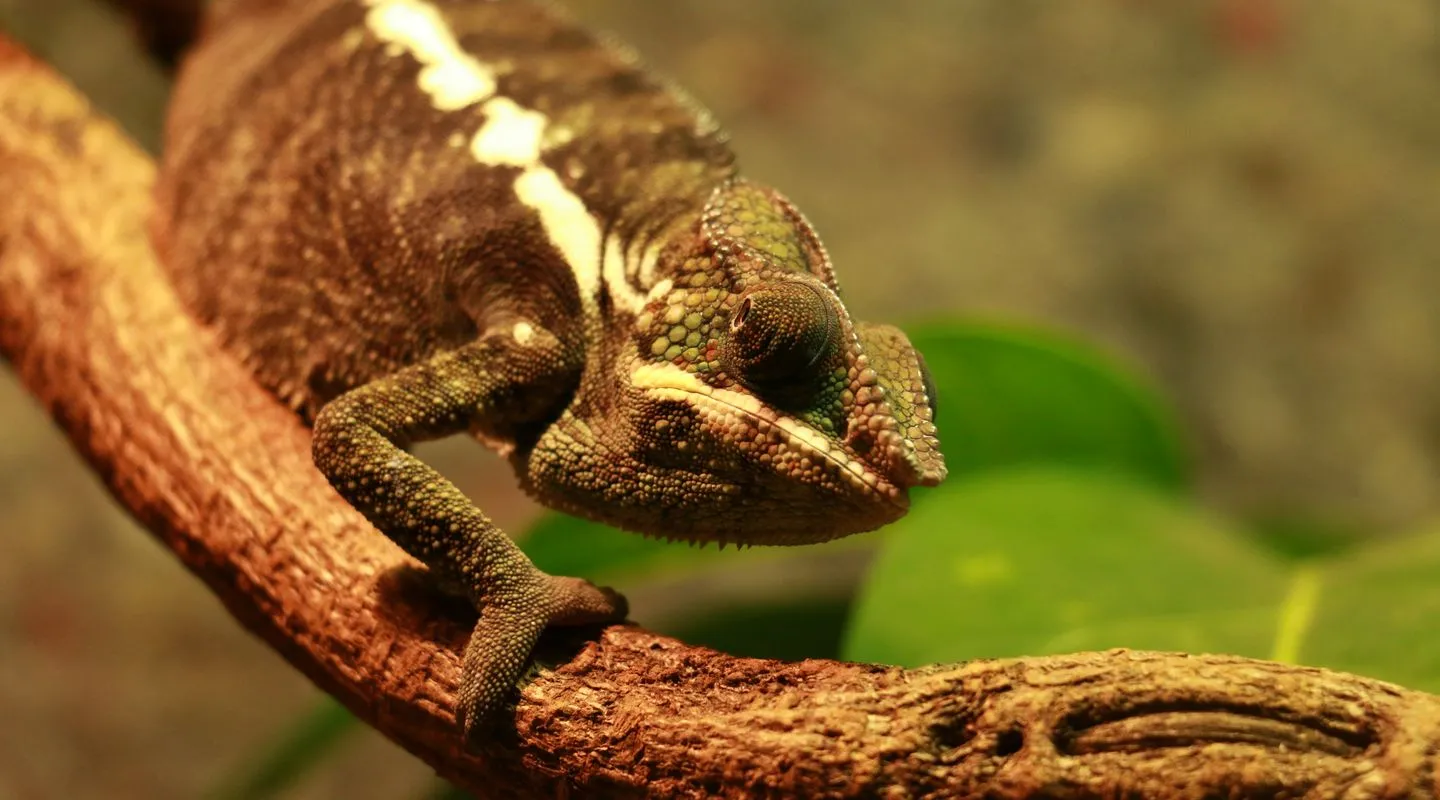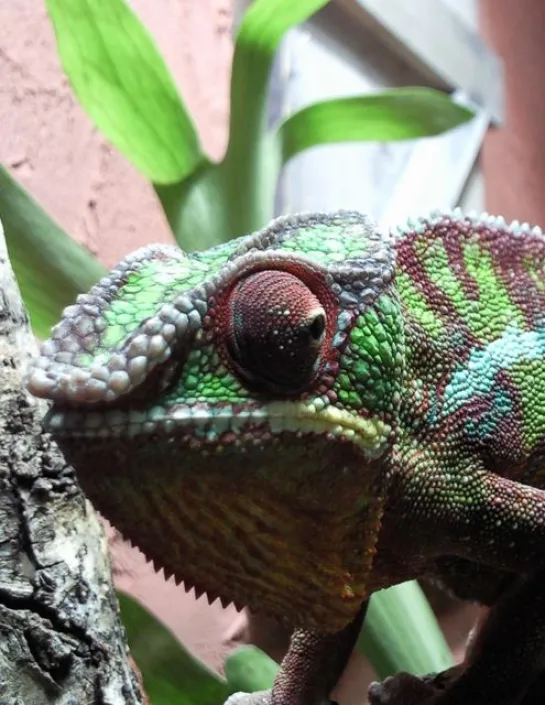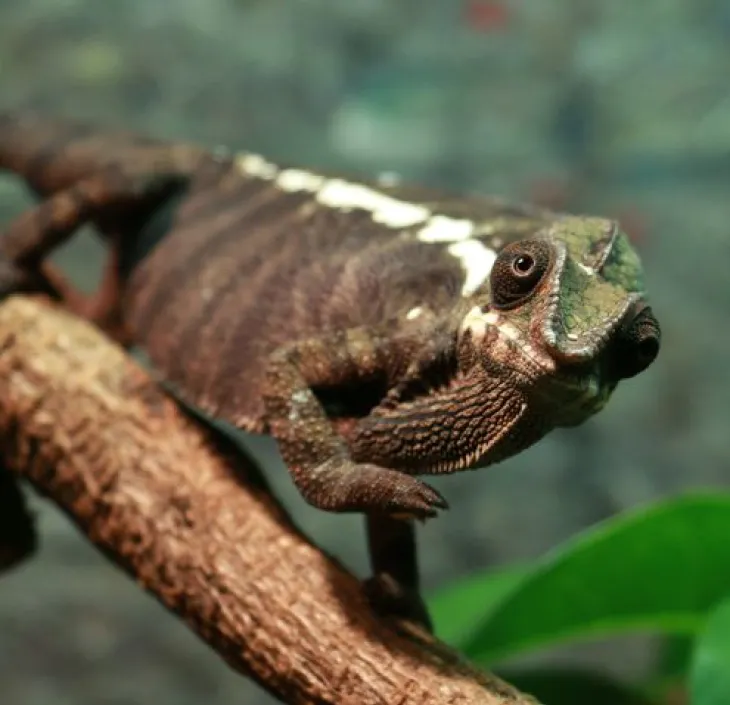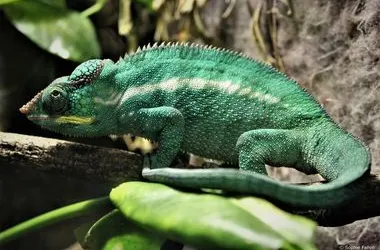The panther chameleon feeds on insects that it captures with its tongue.

Reptiles and amphibians

Identity card
appendix II
The panther chameleon lives on the islands of Madagascar and Reunion.
These tree-dwelling animals are very territorial and solitary. They can sometimes settle for a very small territory.
As an adult, it measures between 40 and 50 cm for males and between 20 and 30 cm for females (including the tail).
Insects

The length of its tongue can be equivalent to the length of its body.
The panther chameleon feeds on insects that it captures with its tongue.
They reach their sexual maturity on average at the age of 8-9 months. Eggs are incubated for about 4 weeks. Females usually lay between 15 and 30 eggs and hide them in a burrow that they have dug. To protect their eggs, they hide the nest site with twigs and leaves.
The panther chameleon lives in Madagascar and Reunion Island. It is one of the largest chameleons. These tree-dwelling animals are very territorial and solitary. They can sometimes settle for a very small territory.
As an adult, it measures between 40 and 50 cm for males and between 20 and 30 cm for females (including the tail).
The panther chameleon Furcifer pardalis can change colour by mimicry. It is a means of communicating with its fellow creatures. This colour change may be in response to temperature, light or emotions such as fear or anger.
It is protected by the Washington Convention on the islands of Madagascar and Reunion.
mankind and shores

The Ocean Mag
In the spotlight
Poissons, crevettes, requins, les animaux qui se reproduisent ou sont élevés à Nausicaá rejoignent les espaces d'exposition.

Article
Savez-vous combien d’espèces de requins sont à découvrir à Nausicaá ? Apprenons-en plus sur ces animaux fascinants !
Article
Which came first, the egg or the fish? A brief overview of eggs and reproductive strategies in marine animals.